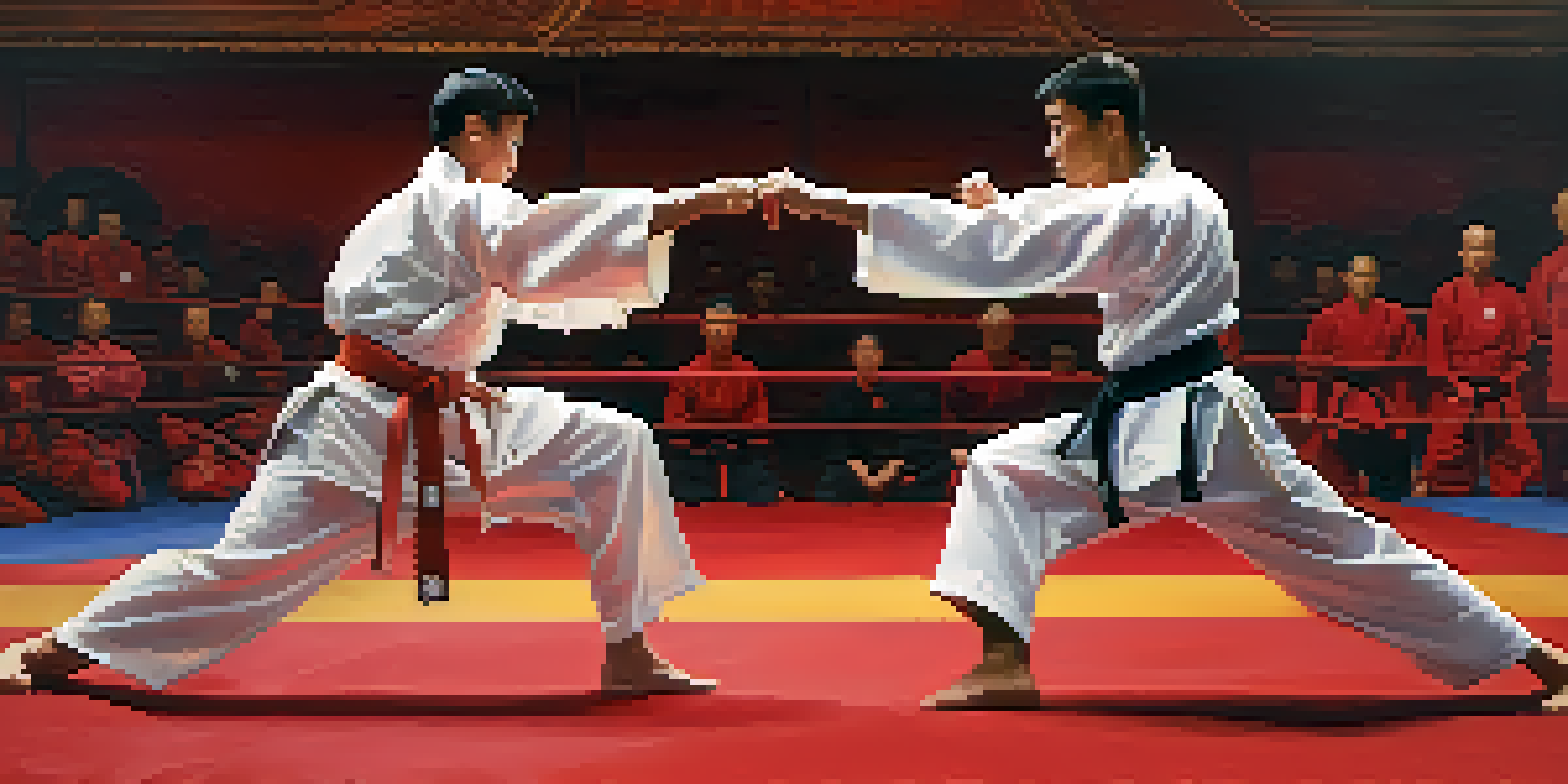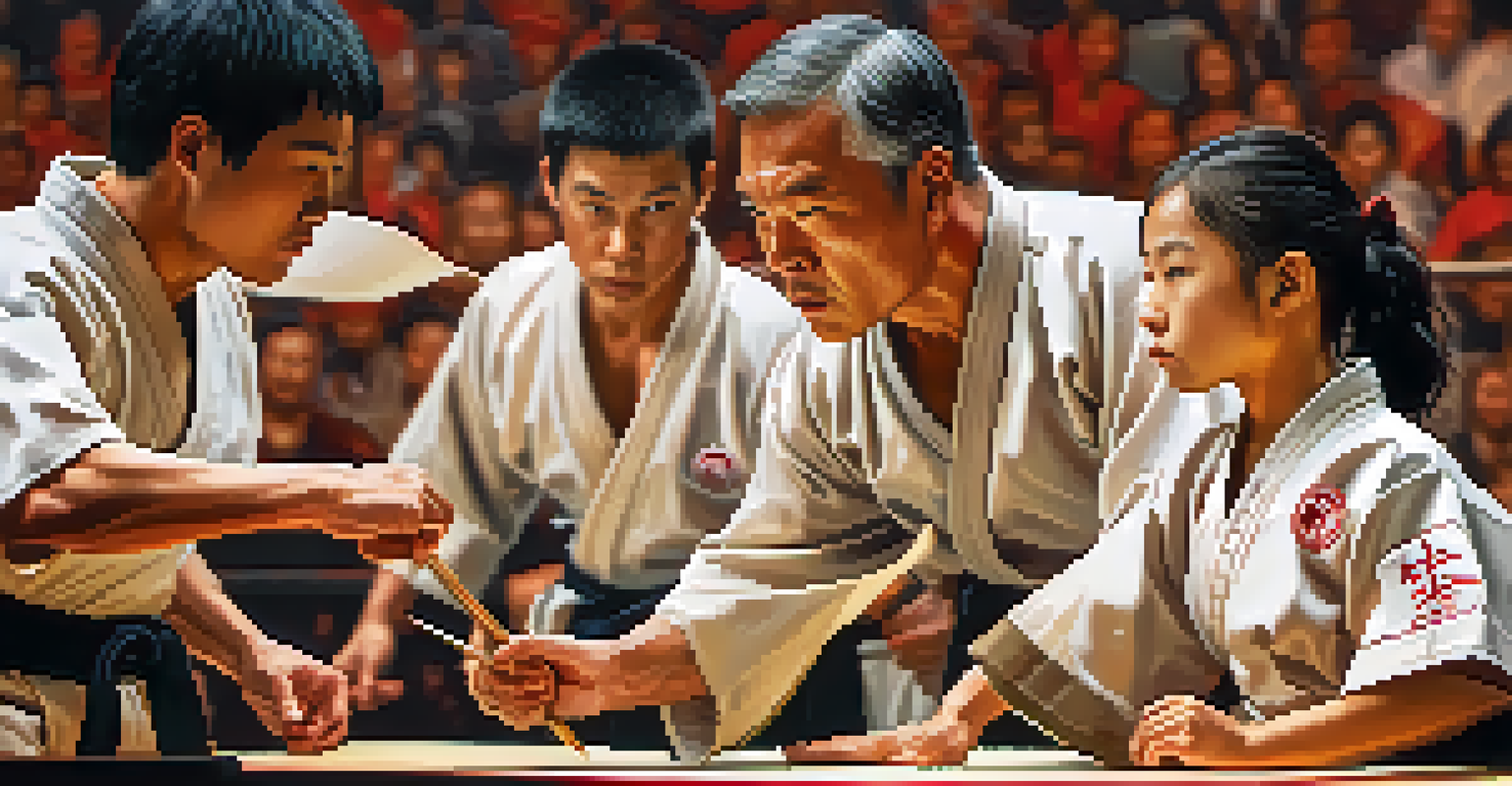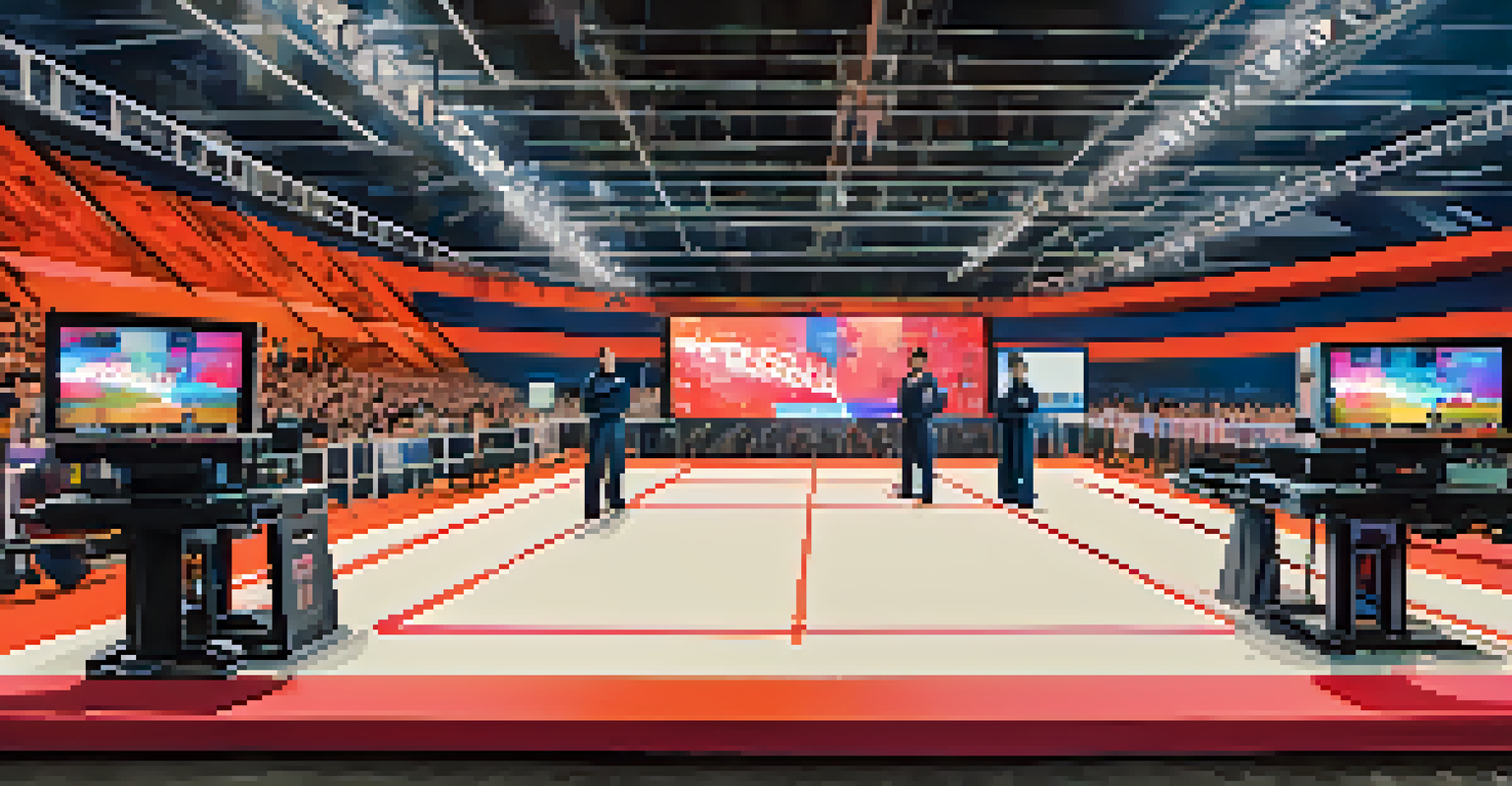Analyzing the Scoring System in Martial Arts Competitions

The Importance of Scoring in Martial Arts Competitions
Scoring is a crucial aspect of martial arts competitions, as it determines the winner and reflects the competitors' skills. Unlike casual sparring, competitions require a clear, objective method to assess performance. This ensures fairness and consistency in judging, allowing participants to focus on their technique and strategy.
In martial arts, the journey is the reward, but scoring is the map that guides you to success.
In martial arts, different styles adopt various scoring systems, which can sometimes confuse spectators and new practitioners. For instance, point-based systems emphasize controlled strikes and techniques, while others may focus on overall performance and effectiveness. Understanding these systems helps both competitors and fans appreciate the nuances of each martial art.
Moreover, an effective scoring system encourages athletes to improve their skills and adapt their strategies. By providing feedback on their performance, competitors can identify their strengths and weaknesses. This not only enhances their personal growth but also raises the overall level of competition.
Types of Scoring Systems Used in Martial Arts
Martial arts competitions commonly utilize two primary scoring systems: the point system and the judge-based system. The point system awards points for successful strikes, kicks, or throws, while the judge-based system relies on officials to evaluate the overall performance. Each system has its pros and cons, impacting how competitors approach their matches.

In point-based systems, competitors score points for controlled techniques that land cleanly on their opponents. This method promotes safety and encourages precision, as athletes must demonstrate skill over brute force. However, it can sometimes lead to a less dynamic match, as competitors may focus on scoring rather than engaging in full-contact sparring.
Scoring Defines Competition Outcomes
The scoring system in martial arts competitions is crucial as it objectively assesses performance, ensuring fairness and consistency among competitors.
On the other hand, judge-based systems often result in more fluid and unpredictable matches. Judges assess the fight as a whole, considering factors like aggression, technique, and overall control. However, this subjectivity can lead to inconsistencies in scoring, which may frustrate athletes and fans alike.
Judging Criteria in Martial Arts Competitions
Judges play a pivotal role in martial arts competitions, as their assessments directly influence the outcome. They typically evaluate competitors based on several criteria, such as technique, control, intensity, and overall performance. Each judge may have a different perspective, which can lead to varied scoring, adding an extra layer of complexity to the competition.
The essence of martial arts lies not in victory or defeat, but in the discipline and respect for the journey.
For example, in traditional karate competitions, judges look for precise strikes and proper stances. They award points for clean techniques demonstrated with control and timing. In contrast, other styles like taekwondo may emphasize speed and agility, rewarding competitors who can land rapid, accurate kicks.
Understanding the judging criteria can help competitors tailor their performances to align with the expectations of the judges. By focusing on specific techniques and strategies that resonate with the judging criteria, athletes can enhance their chances of success in the ring.
Impact of Scoring on Competitor Strategy
The scoring system significantly influences how competitors approach their matches. Knowing the rules and scoring criteria allows athletes to develop tailored strategies that maximize their strengths while exploiting their opponents' weaknesses. This strategic planning can be the difference between victory and defeat.
For instance, in a point-based system, an athlete may choose to play defensively, focusing on counter-attacks to score points. In contrast, in a judge-based system, a competitor might adopt a more aggressive style to impress the judges and showcase their skills. Understanding the nuances of the scoring system can empower athletes to make informed decisions during their matches.
Judging Criteria Influences Strategy
Competitors tailor their strategies based on the scoring criteria set by judges, which can significantly impact their approach during matches.
Additionally, competitors often adjust their strategies based on the perceived strengths and weaknesses of their opponents. A fighter who excels in striking may focus on landing clean hits, while a grappler might aim to take the match to the ground. This adaptability is crucial in martial arts competitions, where every point counts.
The Role of Technology in Martial Arts Scoring
Technology has started to play an increasingly prominent role in martial arts scoring. Electronic scoring systems and video replay technology are being implemented in various competitions to ensure accuracy and transparency in the judging process. These advancements provide an additional layer of fairness and can help reduce disputes over scoring decisions.
For example, some competitions use electronic sensors in protective gear to automatically register points when a competitor lands a strike. This not only speeds up the scoring process but also minimizes human error in judgment. Such technology can enhance the overall experience for athletes and spectators alike, creating a more engaging and dynamic environment.
However, while technology can improve accuracy, it may also lead to debates about the balance between human judgment and technological assistance. Striking a balance between the two is essential to maintain the sport's integrity while embracing innovations that enhance the competition.
Common Challenges in Martial Arts Scoring
Despite the best efforts to create fair scoring systems, challenges still arise in martial arts competitions. One of the most common issues is the subjectivity of human judges, which can lead to inconsistencies in scoring. Different judges may interpret techniques and performances differently, causing frustration among competitors and fans.
Additionally, the complexity of various martial arts styles can complicate the scoring process. As different styles may have unique techniques and criteria, judges must be well-versed in each style to ensure fair assessments. This requirement can create a steep learning curve for officials, impacting the overall quality of the competition.
Technology Enhances Scoring Accuracy
The integration of technology, such as electronic scoring systems, aims to improve accuracy and transparency in martial arts judging.
To address these challenges, many organizations provide extensive training for judges and implement standardized scoring guidelines. However, ongoing discussions about the best practices for scoring continue to evolve, reflecting the dynamic nature of martial arts as a whole.
Conclusion: Embracing the Scoring System in Martial Arts
Understanding the scoring system in martial arts competitions is essential for athletes, coaches, and fans alike. By grasping the nuances of different scoring methods, participants can better prepare for competitions and enhance their performances. Moreover, a clear understanding of the scoring process can foster greater appreciation for the sport as a whole.
As martial arts continue to evolve, so too will the scoring systems that govern competitions. Embracing technology and addressing common challenges will be crucial in enhancing fairness and consistency in scoring. This ongoing adaptation is vital for the growth and development of martial arts as an exciting competitive sport.

Ultimately, the scoring system in martial arts serves as a reflection of the athletes' skills, strategies, and dedication. By respecting and understanding this vital aspect of competition, everyone involved can contribute to a more engaging and dynamic martial arts community.